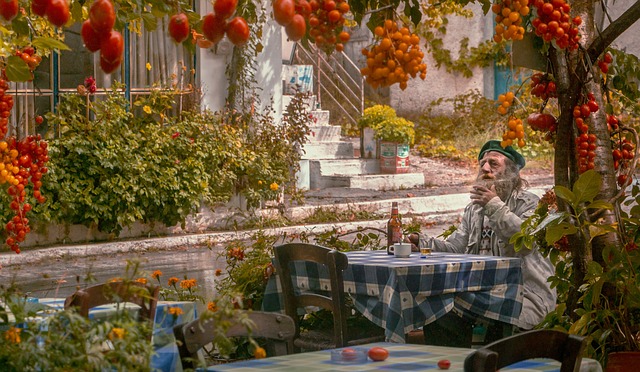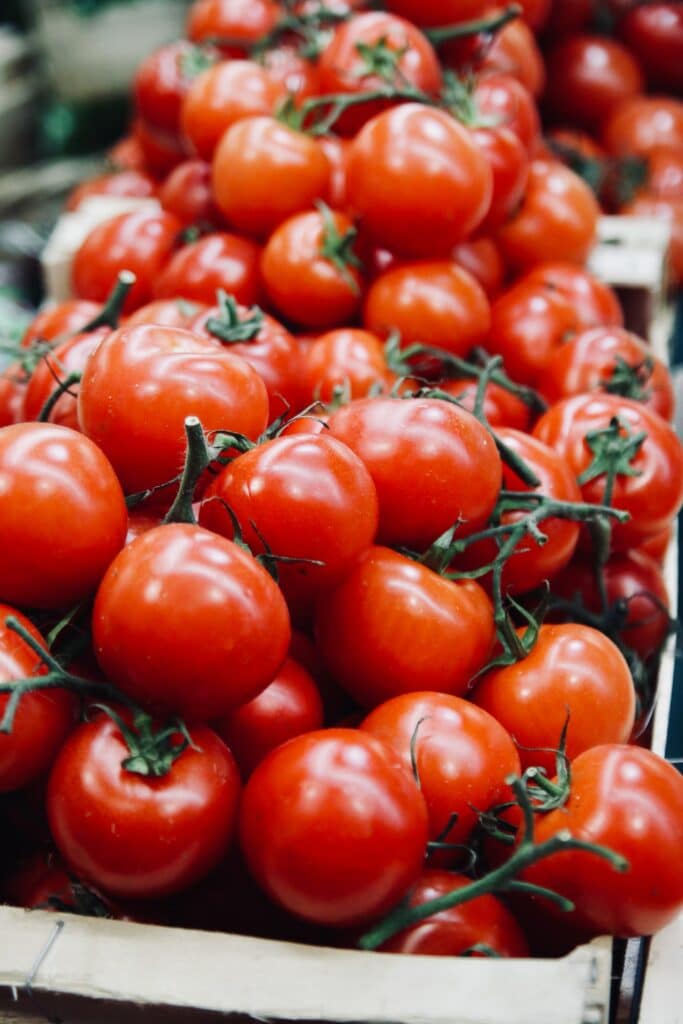Introduction – Tomatoes Are Of One Of Our Favorites
We’ve talked about the best vegetables to grow at home and tomatoes are near the top of our list here. If you’ve ever grown tomatoes in a greenhouse, you know how easy it is to have fresh tomatoes year-round. And if you’re lucky enough to live in an area that produces enough winter sun, you can grow plants from seedlings all year long. But what about the rest of us? Do we have any hope at all? The short answer is yes! We may not be able to harvest our own homegrown tomatoes until fall but there are still ways to get your tomato fix before the weather turns cold again. All it takes is a little creative thinking and some careful planning to be planting tomatoes in July.

Best Month To Plant Tomatoes
The best time to plant tomatoes will vary depending on your location, but in general, you should plant them after the last frost date in your area because tomatoes love warmth. Go for late spring, early summer. If you’re in a Zone 10 climate, then you should know that zone 10 generally has a long growing season, with warm winters and hot summers. In such a climate grow your tomatoes in the fall.
Planting Tomatoes In July – Good Idea?
Planting tomatoes in July is a great idea as long as you take care of them. As a warm weather crop, they need heat to grow and ripen. Moreover, they require a lot of water. However, the best time to plant your tomato seedlings is early in the morning or late at night when temperatures are cooler for maximum success with minimal stress on tomatoes or soil. Expect to need a greenhouse and heat lamps if you find yourself deep in the growing season.
Is July Too Late To Plant Tomatoes
In July, you may be wondering if it’s planting tomatoes in July is too late. The answer is no—not at all! It’s actually one of the best times to plant fresh tomatoes, because your plants will reach maturity before the fall frost.
Tomatoes are easy to grow and can thrive in a variety of conditions. If you have an outdoor space with sun exposure (or even partial shade), then you’re good to go! You can even grow them indoors if you don’t have much room outside. We’ll get into more detail shortly about how exactly this works and which varieties are best for each situation.
There are two main methods used when growing tomatoes: hydroponics or soil-based gardening methods such as pots or raised beds filled with organic soil amendments (composted leaves). Either way, the process starts with choosing a tomato variety that suits what kind of environment suits your needs best – whether that means sun exposure or indoor temperatures etcetera?
Tomatoes Need Crazy Amount Of Light
You’re going to need a crazy amount of light, water, food and warmth. And by “crazy” I mean a lot more than you probably have right now.
If you don’t have enough sunlight in your yard (or if it doesn’t get direct sunlight for more than a few hours per day) then you should consider growing tomatoes indoors. Growing them indoors also allows for greater control over the environment—soil temperature and humidity can be monitored more easily as well as pests like slugs are less likely to be an issue.
Tomatoes Will Ripen Indoors In A Few Weeks

The most important thing to remember when you’re growing tomatoes indoors is that they need at least 10 hours of direct sunlight. If you don’t have a spot in your home that gets this much light, then you can still grow them! You just won’t be able to eat them as soon as they ripen.
In addition to being in direct sunlight, tomatoes will ripen faster in warm rooms and dark rooms than cool ones. In fact, if you want really ripe tomatoes quickly (and who doesn’t?), it’s best if your room temperature is around 80 degrees Fahrenheit (27 degrees Celsius). If your house isn’t warm enough for this kind of heat, try putting the plant on top of an old computer tower or something else that generates heat from its internal components.
Tomato Seeds Are Tiny And They Need Light To Germinate
If you’re a tomato lover, there may be no better time to plant tomatoes than right now. Tomatoes are one of the few vegetables that are best grown from seed rather than transplanted from seedlings. When you’re buying seeds, make sure they’re labeled as “tomato seeds” and not something else like peppers or eggplants. You can also grow your own using fresh tomato fruit (the ones you eat) as long as it isn’t too ripe yet or has been in storage for too long.
Tomato seeds are tiny—so tiny that if you try to sow them directly into the soil without first soaking them in warm water for 24 hours, they might not come up at all! Soak your seeds overnight before planting them about ¼-inch deep in well-drained soil with full sun exposure; keep moist but not soggy during germination (about 10 days).
If growing indoors under lights or inside a greenhouse dome: provide supplemental lighting at least 16 hours per day through mid-summer when temperatures rise above 75°F F; reduce watering frequency after seeds germinate; transplant into larger pots once plants reach 2 inches tall but still small enough to transplant again later on – just remember not to let soil dry out completely between waterings!
Indoor Tomatoes Need Natural Cycles
When you’re growing tomatoes indoors, you need to be careful about the light cycle. Tomatoes will grow much faster if they have a lot of natural sunlight, but they also need darkness so that they can rest. This means that unless you are growing your tomato plants in a greenhouse where they can get plenty of natural light, it is best to switch on and off your lights according to the outside day/night cycle.
Conclusion – Can I Plant Tomatoes In July
Indoor tomatoes are a great way to enjoy the flavors of summer in the winter. They’ll ripen quickly, and they need natural cycles to do their job right. If you’re looking for something new to try out, then try planting some tomatoes indoors!
